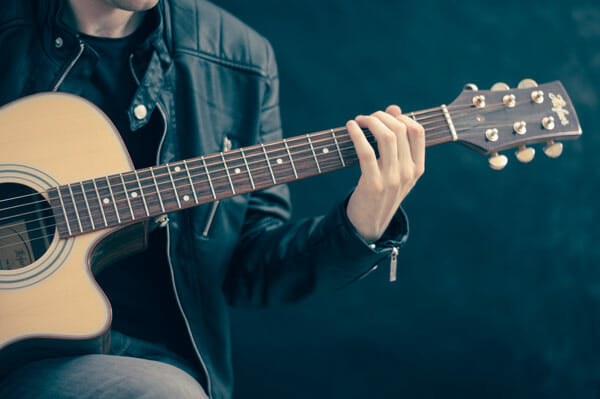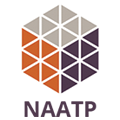Recovery Through Art and Music Therapy
By Jared Henry
Though substance use disorder has been around since man discovered the mind-altering properties of chemical concoctions, it wasn’t until fairly recently that addiction was classified as a disease (1987). With this classification, the race to find the most effective way to treat and prevent addiction commenced, and since then, it has proven to be a long and arduous journey of discovery. Though the discoveries found through practice and research on the efficacy of various methods paved the way for more evolved and improved practices today, there are still breakthroughs, techniques, and practices being made that will change the way we treat addiction in the years to come.
When we think of therapy, the first thing that may come to mind (especially for those who have been there) is a room with a comfortable couch or chair. In front of you sits a man or woman with a notepad, jotting down their thoughts based on the answers you give to engage how you are feeling, how you process emotion, and to provide ways in which to address or react to the circumstances that you face in your daily life. These sessions can be life-changing, acting as an outlet of expression for thoughts and feelings that all too often get buried within our souls’ depths — festering until we come to rely on outside means to alleviate their incessancy, including drugs and alcohol. However, other forms of therapy have gained researchers’ and practitioners’ attention— methods that go beyond the traditional one-on-one or group talk sessions that have been a cornerstone in mental illness engagement for decades. Some of those other forms of therapy are starting to turn heads for those in the clinical research realm of substance use disorder treatment and prevention — one being a creative expression or art therapy.
Art therapy isn’t exactly new, as the first use of creative expression in addiction treatment dates back to the 1950s. Since then, art therapy has gone from being an obscure, person-specific preferential mode of emotional exploration to being more widely used for sufferers of addiction at large — specifically being implemented in a growing number of rehabilitation centers and intensive out-patients programs around the world. What exactly is art therapy, and what role does it play in the treatment and management of addiction? According to the American Art Therapy Association (AATA), art therapy uses creative expression to “effectively support personal and relational treatment goals. It is used to improve cognitive and sensory-motor functions, foster self-esteem, and self-awareness, cultivate emotional resilience, promote insight, enhance social skills, reduce and resolve conflicts and distress…” Additionally, AATA claims art therapy “engages the mind, body, and spirit in ways that are distinct from verbal articulation alone. Kinesthetic, sensory, perceptual, and symbolic opportunities invite alternative modes of receptive and expressive communication, which can circumvent language limitations. Visual and symbolic expression gives voice to experience, and empowers individual transformation.” In other words, patients are given an alternative mode of internal self-communication through creative expression to identify emotions that are often too difficult to verbalize. In turn, this allows people to provide a voice to a range of emotions that require a more interpretive or introspective analysis that can be explored with an art therapist’s assistance.
As you may have guessed, art therapy encapsulates a wide range of the arts, including drawing, painting, writing, sculpture, music, and more. But how are these used in the context of addiction treatment and prevention? There are various activities used in therapeutic settings, for example having a patient draw an incident that occurred while using substances. Others include drawing or painting emotions, stress painting (painting during times of anxiety or stress), writing in a stream of consciousness journal (writing down anything that comes to mind), writing a simple song, or interpreting lyrics of a song that speaks to the patient — the possibilities are endless.
So we know what art therapy is — but how effective is it? There have been numerous studies that dive into the efficacy of art therapy and how creative expression can be used in both individual and group settings. While findings have been somewhat limited to generalizations, they mostly concur that the benefits of art therapy can be profound in treating substance use disorder. Of those findings, it was found that traditional art (painting, drawing, etc.) and music were the two most widely used due to their accessibility.
For traditional art (drawing, painting, etc.), the findings suggest several benefits for substance use disorder patients, such as decreasing denial, reducing opposition to addiction treatment, providing an outlet for communication, and lessening shame. Additionally, viewing, discussing, and interpreting existing art can help in group discussions and motivate patients to change by moving them away from reflection and into a state of action.*
Like art therapy, music therapy helps patients tap into emotions and needs that may be difficult to express through more traditional forms of communication (verbal or written). Studies have found that music therapy provides a way to motivate patients to receive treatment and become active participants in their recovery. The American Music Therapy Association (AMTA) states that music therapy is useful regardless of musical background. Examples of clinical music therapy include lyric analysis, relaxation training, songwriting, musical games, and improvising music based on emotions or other topics relevant to treatment. In these treatments, patients go beyond merely listening to music to engage emotions, motivations, and barriers to recovery through lyrics and melody.* Studies on music therapy have also found that songwriting and lyric analyses are related to a positive emotional change in patients; drumming is associated with relaxation. It can be useful for patients who have experienced repeated relapses, and activities in music therapy are associated with a decrease in anxiety, depression, anger, and stress. In addition, music therapy is positively related to a willingness to participate in addiction treatment.*
Express Yourself!
As part of this year’s Wellness Week with Herren, we are partnering with two organizations in an effort to utilize the power of creative expression. Rock to Recovery and PeaceLove, use creative expression as a means to inspire, heal, and transform lives through music (writing, playing, and performing) and art.
About Rock to Recovery
Rock to Recovery helps people heal and transform their lives through the powerful experience of writing, playing, and performing music as a group.
In September, Herren Project will be hosting our pilot collaboration with Rock to Recovery. Stay tuned for more information coming soon.
About PeaceLove
PeaceLove promotes mental wellness by using creativity and expression to inspire, heal, and communicate. They believe everyone deserves a safe space to share their emotions. Their workshops are a place to create fearlessly and honestly without judgment — a place to be vulnerable, celebrate, and empower each other. Herren Project is excited to partner with PeaceLove to provide Herren Project Clubs exclusive access to this virtual online platform coming in March.
HITRECORD
HitRecord is a place for artists of all experience levels, from beginners to experts, to create things together as a community. HitRecord is a place to celebrate the power of collaboration through art, music, writing, film, and anything in between. Herren Project and HitRecord connected to create a Herren Project collaboration page, which is open for anything looking for a place to let your creativity shine.
I loved the idea of HitRecord so much that I have been an active participant in many collaboration projects throughout the past year. It’s been an amazing creative outlet for me through the pandemic. One of my songs was even used as a curator featured prompt! You can check that out here to remix it and turn it into something of your own. You can also start your own prompt and enjoy how people evolve it into something entirely new.
Feel free to use any of the work I’ve posted there as inspiration or to get your creative juices flowing. Also, be sure to follow Herren Project’s HitRecord profile to see what other community members are creating.
Be You! Be Creative!
The accessibility of art therapy is what makes it a unique form of addiction treatment or a recovery-based exercise. Art is a vehicle that helps to facilitate the exploration of a range of emotions that transcend language that is often difficult to verbalize. Art and music are everywhere — and you don’t necessarily need to be in a therapist’s office to reap the many benefits of creative expression. Many of the activities used in art therapy can be done in your own home and can be a great way to de-stress, unwind or take out some frustration in a safe, productive way. Listening to a favorite song and paying attention to how it makes you feel, then picking up a pen, pencil, or paintbrush. Creating an abstract interpretation of your current mood or using some sturdy cooking utensils as a drum set to let out some negative energy are all examples of creative expression. Each has a positive impact on mental health, especially if you’re struggling in recovery or treatment.
If you’re having trouble expressing yourself, consider art therapy — whether you’re experienced or a beginner, there’s no wrong way to engage the arts, as they say, “Art is in the eye of the beholder, and everyone will have their interpretation.” Remember that the world is your canvas — so go out there and express yourself!








